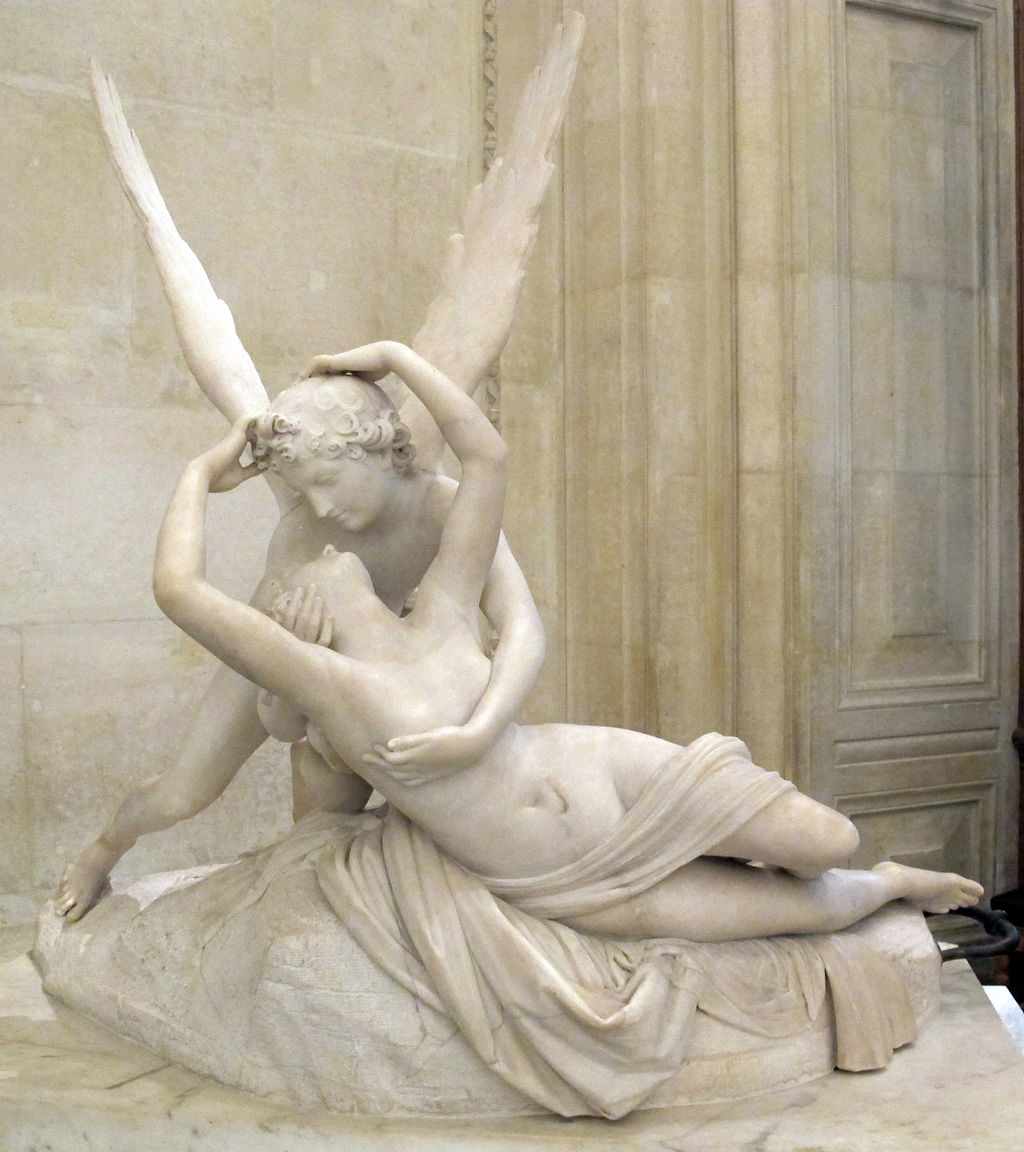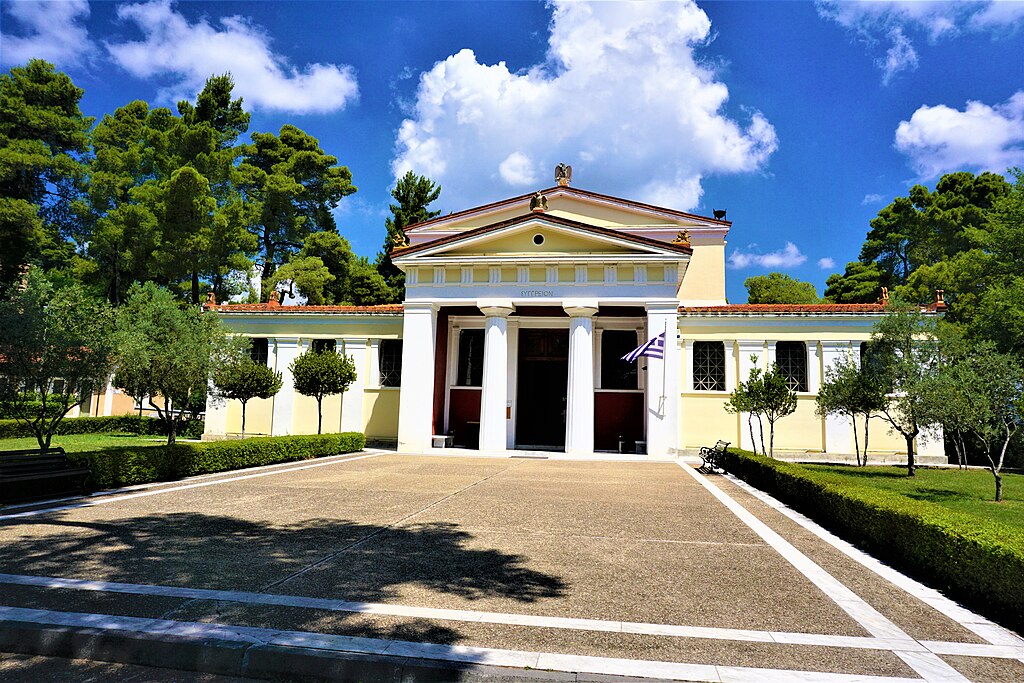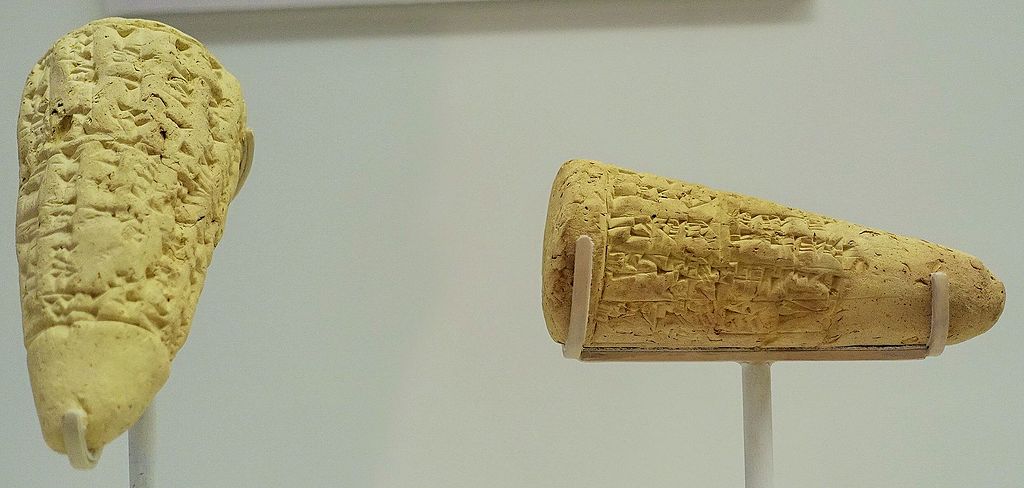
“The North-West Passage” by John Everett Millais depicts an elderly sailor with a grim expression sitting at a desk, with his daughter seated on a stool beside him. He stares out at an imaginary horizon while she reads from a log-book.
On the desk is a large chart depicting complex passageways and incompletely charted islands. British naval flags hang on the wall, as does another picture of a naval officer.
Outside the window, a boat is sailing in safe waters in contrast to the room’s pathos.
The chart depicted on the desk is an actual map of Canada’s recently explored northern coast printed in 1854. The painting on the wall that is partly hidden by the flags is depicting an ice-trapped ship.
The painting was exhibited with the subtitle:
“It might be done, and England should do it.”
The title and subtitle refer to the repeated failure and frustration of several British expeditions to find the Northwest Passage, a navigable passageway around the north of the American continent.
The north-west passage was a dangerous sea route around North America via the Canadian Arctic. For centuries, explorers attempted to find a navigatable sea route and use it as a trade route to Asia.
For the British, the north-west endeavor became associated with failure, adversity, and death, as ships and their crews battled against the dangerous and torturous frozen wilderness without success.
The search for the northwest passage had been undertaken repeatedly since the voyages of Henry Hudson in the early 17th century.
The most significant attempt was the 1845 expedition led by John Franklin, which had disappeared, apparently without trace. Subsequent expeditions found evidence that Franklin’s two ships had become stuck in ice.
Millais was inspired to create this painting when yet another new expedition to explore the passage, the British Arctic Expedition led by George Nares, was being prepared.
The painting was hugely successful at the time and was very widely circulated in reproductions. It came to symbolize Britain’s self-image as a nation of heroic explorers.
Millais received a letter from the explorer George Nares in which he said that the painting had had a powerful effect on the spirit of the nation.
In 1874 Punch published a pastiche cartoon portraying Disraeli, the British Prime Minister as the old sailor and Britannia, in his daughter’s position.
In 1915 a cartoon entitled “The Dardanelles Passage” was captioned “it might be done, and England and France can do it,” referring to the Gallipoli campaign, which was then beginning. John Bull and Marianne replaced the old sailor and his daughter.
George Bernard Shaw was inspired by the imagery of failure and frustration in the artwork that he used the idea of the impotence of its characters when he came to write his play “Heartbreak House.” The main characters’ relationship was based on the figures in the painting, and one scene partially reproduces the composition.
Northwest Passage
The Northwest Passage is the sea route between the Atlantic and Pacific oceans through the north Arctic Ocean along North America’s northern coast.
For centuries, European explorers sought a navigable passage as a possible trade route to Asia. An ice-bound northern route was discovered in 1850 by the Irish explorer Robert McClure.
Norwegian Roald Amundsen made a more southerly opening in 1903–1906.
Until 2009, the Arctic pack ice prevented regular marine shipping throughout most of the year. Arctic sea ice declines have rendered the waterways more navigable.
The contested sovereignty claims over the waters may complicate future shipping through the region. The Canadian government maintains that the Northwestern Passages are part of Canadian Internal Waters.
However, the United States and various European countries claim that they are an international strait and transit passage, allowing free and unencumbered passage.
John Everett Millais
Sir John Everett Millais was a Victorian-era English painter who was one of the Pre-Raphaelite Brotherhood founders.
The Pre-Raphaelite Brotherhood was founded at his home in London. Millais became a famous exponent of the style with this painting.
By the mid-1850s, Millais was moving away from the Pre-Raphaelite style. He developed a new and powerful form of realism in his art.
Pre-Raphaelites
The Pre-Raphaelites was a group of English painters, poets, and art critics, founded in 1848. The group intended to reform art by rejecting what it considered the mechanistic approach first adopted by the artists who succeeded Raphael and Michelangelo, hence the name “Pre-Raphaelite.”
The Pre-Raphaelite Brotherhood sought a return to the abundant detail, intense colors, and complex compositions of Pre-Raphaelite Italian art.
The Pre-Raphaelites focused on painting subjects from life and literature. They often used historical costumes for accuracy.
They painted directly from nature itself, as accurately as possible, and with intense attention to detail. The Pre-Raphaelites defined themselves as a reform movement.
They created a distinct name for their art and published a periodical to promote their ideas. And later, the medievalist influence extended the movement’s power into the twentieth century with artists such as John William Waterhouse.
John Ruskin had influenced the Pre-Raphaelite commitment to painting from nature and depicting nature in exquisite detail.
John Ruskin (1819 – 1900) was the leading English art critic of the Victorian era and an art patron, watercolorist, a prominent social thinker, and philanthropist.
The North-West Passage
- Title: The North-West Passage
- Artist: John Everett Millais
- Medium: Oil on canvas
- Date: 1874
- Style: Pre-Raphaelite
- Dimensions: Height: 222.2 cm (87.4 in);Width: 176.5 cm (69.4 in)
- Museum: Tate Britain
John Everett Millais
- Name: Sir John Everett Millais, 1st Baronet
- Born: 1829 – Southampton, England
- Died: 1896 (aged 67) – Kensington, London
- Nationality English
- Notable works:
- Isabella
- Christ in the House of His Parents
- The Martyr of Solway
- Ophelia
- Blow Blow Thou Wind
- The Black Brunswicker
- A Dream of the Past: Sir Isumbras at the Ford
- The North-West Passage
John Everett Millais
A Virtual Tour of Pre-Raphaelite Artists
John Everett Millais
- Isabella
- Christ in the House of His Parents
- The Martyr of Solway
- Ophelia
- Blow Blow Thou Wind
- The Black Brunswicker
- A Dream of the Past: Sir Isumbras at the Ford
The Search For The Northwest Passage
William Holman Hunt
- Christ in the House of His Parents
- Our English Coasts
- Isabella and the Pot of Basil
- Self-portrait William Holman Hunt
Northwest Passage
Dante Gabriel Rossetti
- Lady Lilith
- Dante’s Dream
- Dante Gabriel Rossetti – Self Portrait
- The Beloved
Roald Amundsen through the Northwest Passage
John William Waterhouse
- The Lady of Shalott
- The Favorites of the Emperor Honorius
- Circe Invidiosa
- Diogenes
- I Am Half-Sick of Shadows, Said the Lady of Shalott
- Hylas and the Nymphs
- Echo and Narcissus
- Ulysses and the Sirens
- Consulting the Oracle
- A Tale from the Decameron
- Circe Offering the Cup to Ulysses
- Saint Eulalia
- Fair Rosamund
Canada’s New Shipping Shortcut
~~~
“It might be done, and England should do it.”
– John Everett Millais
~~~
Photo Credit: John Everett Millais [Public domain], via Wikimedia Commons
Popular this Week








 Sponsor your Favorite Page
Sponsor your Favorite Page SEARCH Search for: Search Follow UsJoin – The JOM Membership Program
Sponsor a Masterpiece with YOUR NAME CHOICE for $5
Share this:
- Tweet
